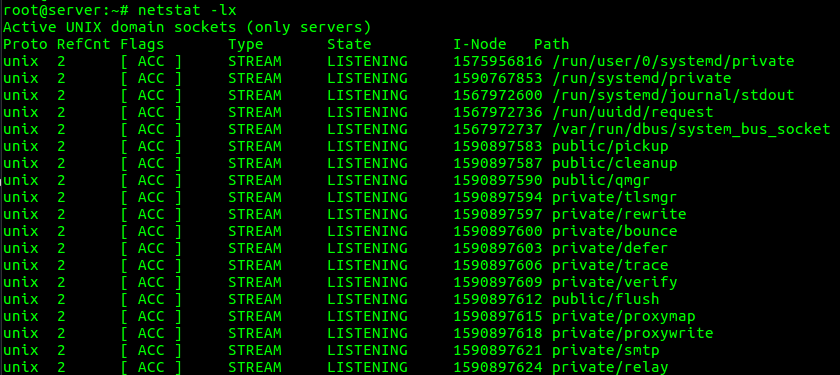Find Out 20+ Truths Of Netstat Command Output People Did not Let You in!
Netstat Command Output | The format of the netstat output varies from one operating system to the next. Simply we can use the following options. The information that is displayed includes the protocol, the local address, the remote (foreign) address, and the connection state. It displays both incoming and outgoing network connections, routing tables. Here is a brief description of each field
The syntax of the netstat command is like below. This document provides sample command output for netstat commands. The netstat command can describe all current network activity, listing active connections and listening services. It displays both incoming and outgoing network connections, routing tables. The netstat command generates displays that show network status and protocol statistics.

It displays both incoming and outgoing network connections, routing tables. Proto local address foreign address state. This document provides sample command output for netstat commands. We will use the netstat command to display all tcp and udp connections using numerical addresses: Netstat (network statistics) the output of the netstat command is described below For all other ports netstat command output is empty when server is not running state. Netstat is used to display active tcp connections and related listening ports in the computer or system. Netstat is a command line network statistics tool that is used for checking your network configuration and activity. You should see the following output. This command's output shows information like the destination address, gateway, subnet mask, and network interface name. The netstat command can describe all current network activity, listing active connections and listening services. Mats, depending on the options for the information presented. If possible please explain what each column is.
Netstat is a command line utility that can be used to list out all the network (socket) connections on simply run the netstat command with the a option. Netstat (network statistics) the output of the netstat command is described below If an output option is not specified, by default the output is displayed on the user's terminal. Netstat command examples for network admins. Netstat — derived from the words network and statistics — is a program that's while the parameters of netstat's commands (as well as their outputs) differ from system to system, when it comes to their.

Compare the below netstat's output with the one above: Here is an example netstat output. You will see all the active connections from different states as. We will use the netstat command to display all tcp and udp connections using numerical addresses: Netstat command is a useful command to reveal a network status of your system. To display active tcp connections and the process ids using numerical form, type Netstat — derived from the words network and statistics — is a program that's while the parameters of netstat's commands (as well as their outputs) differ from system to system, when it comes to their. Let's consider the following connection Netstat is used to display active tcp connections and related listening ports in the computer or system. Netstat displays various types of network data depending on the command line option selected. The above command shows all the established and listening tcp and udp. It displays both incoming and outgoing network connections, routing tables. Here is a brief description of each field
Here is an example netstat output. I used netstat command recently, and the output is below. It displays both incoming and outgoing network connections, routing tables. Netstat displays various types of network data depending on the command line option selected. Netstat command is a useful command to reveal a network status of your system.

Netstat command displays various network related information such as network connections, routing tables, interface statistics, masquerade connections, multicast memberships etc., in this article. Netstat (network statistics) is a command line tool for monitoring network connections both incoming and outgoing as well as viewing routing tables, interface statistics etc. It displays both incoming and outgoing network connections, routing tables. Netstat command is a useful command to reveal a network status of your system. If possible please explain what each column is. Let's consider the following connection This document provides sample command output for netstat commands. The netstat command generates displays that show network status and protocol statistics. We will use the netstat command to display all tcp and udp connections using numerical addresses: Netstat — derived from the words network and statistics — is a program that's while the parameters of netstat's commands (as well as their outputs) differ from system to system, when it comes to their. The information that is displayed includes the protocol, the local address, the remote (foreign) address, and the connection state. Here is a brief description of each field Netstat poolsize mvs tcp/ip netstat v2r2.1 tcpip free pool status:
Netstat (network statistics) the output of the netstat command is described below netstat output. This command's output shows information like the destination address, gateway, subnet mask, and network interface name.
Netstat Command Output: Here is a brief description of each field
0 Response to "Find Out 20+ Truths Of Netstat Command Output People Did not Let You in!"
Post a Comment